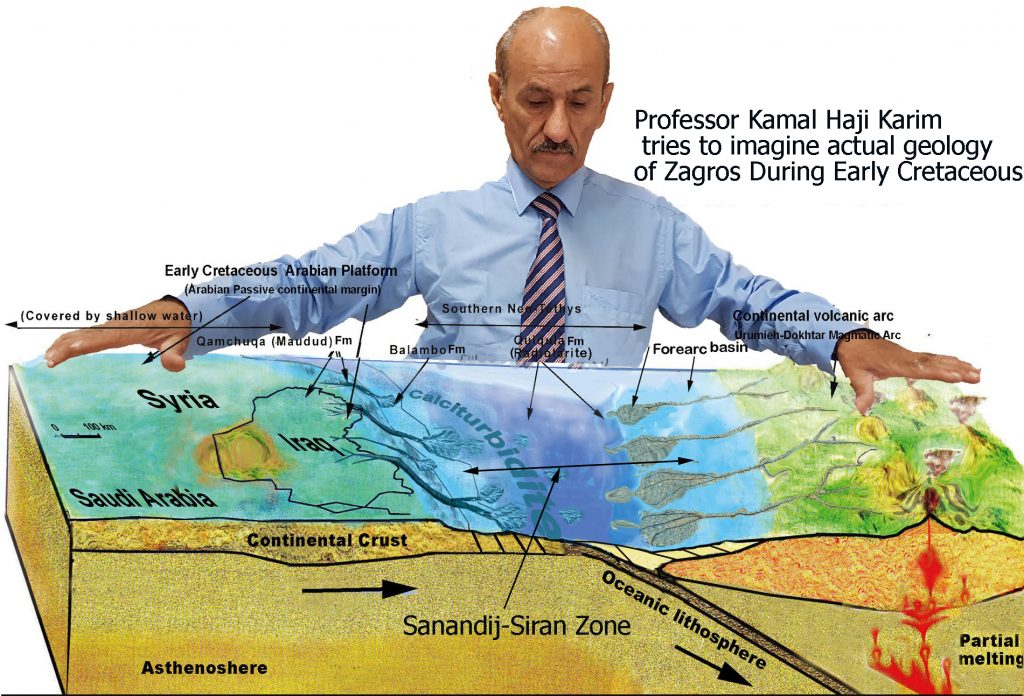By: Kamal Haji Karim

Published in:
Carbonates and Evaporites (2020) 35:19
https://doi.org/10.1007/s13146-019-00544-w
For full text open this link: https://link.springer.com/article/10.1007/s13146-019-00544-w
Abstract
The study focuses on description, analysis and mapping of the thick succession of calciturbidites facies for the first time on the Early Cretaceous Arabian Platform Passive Margin from Western Zagros Fold–Thrust belt, Northeastern Iraq (Kurdistan Region). Along the margin, the study revealed active source of shedding voluminous calciturbidites sediments to the
periplatform and deep basin of Neo-Tethys sea during the Early Cretaceous. Turbidity currents reworked pure coarse and fine detrital carbonates, from the platform, and transported long distance to the basin passing through the slope of the basin. Along this distance, the sediments crossed the marginal slope scoring submarine channels and depositing megabreccias in
addition to coarse detrital carbonates (rudstone) before reaching the basin plain. On the plain mostly the fine grain facies of calciturbidites lay down and mixed with pelagic sediments such as radiolarias and calcispheres. The calciturbidite evidence can be tracked for more than 50 km in the studied area from platform to the basin across the slope. These latter facies are
occasionally graded, laminated and cross-laminated with deep basin fossil such as planktonic foraminifera, and radiolarians. Stratigraphically, Qamchuqa, as carbonate factory, and Balambo Formations represent the platform and the basin facies, respectively. The periplatform (slope) was northeastward-facing and its toe was the depositional locus of shared lithology between the two aforementioned units. These formations are two Early Cretaceous rocks successions that crop out in Zagros Fold–Thrust Belt and occur in most famous oil fields in Middle East. These calciturbidites are keys for picturing boundary condition of the Passive Arabian Continental (platform) Margin, which is proved to be dynamic, stormy and with contrasted bathymetry (high topography). The study totally changes all characteristics of Balambo Formation from bathyal fine grain deposits to mixture of different carbonate grain of calciturbidite and pelagic origins.



